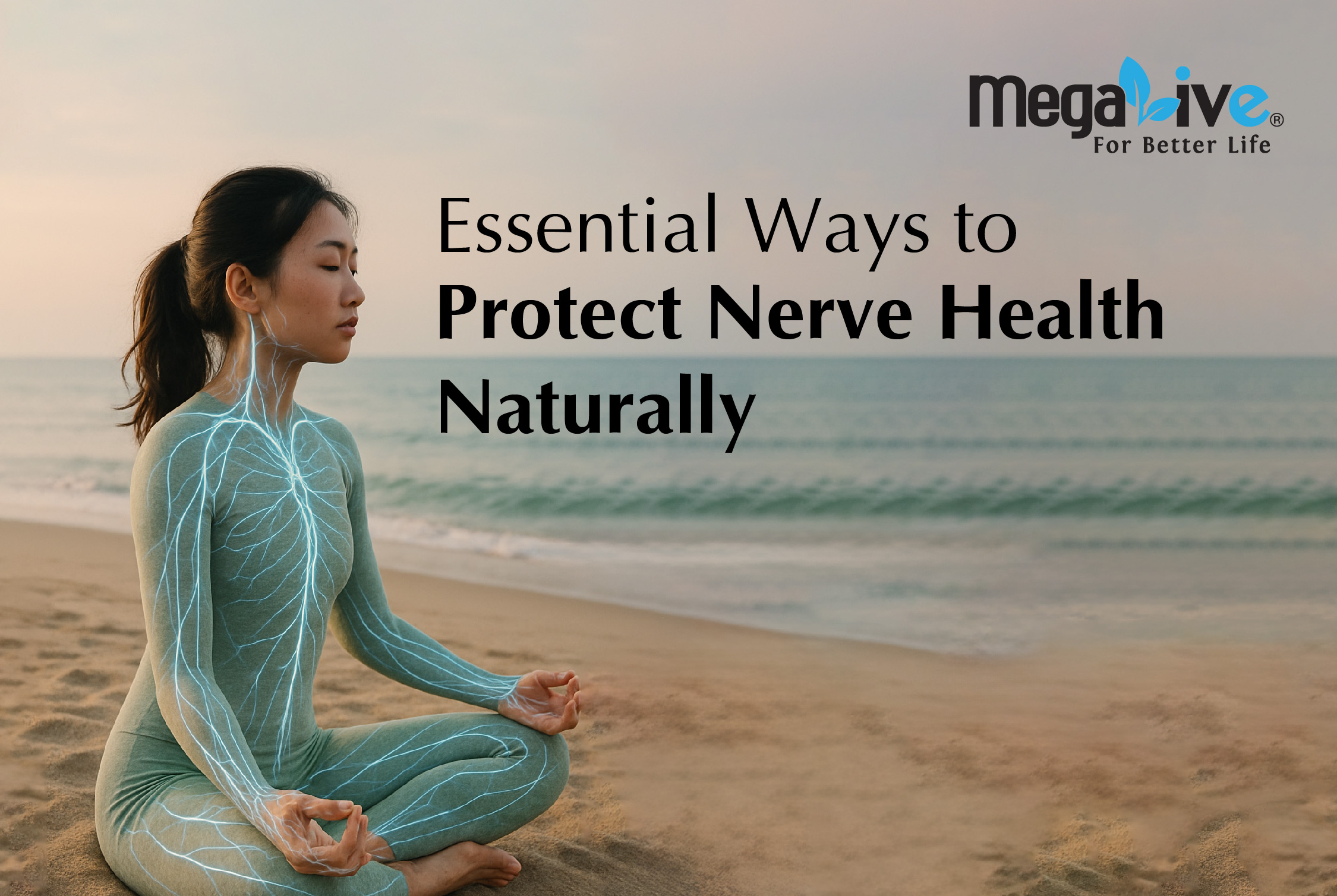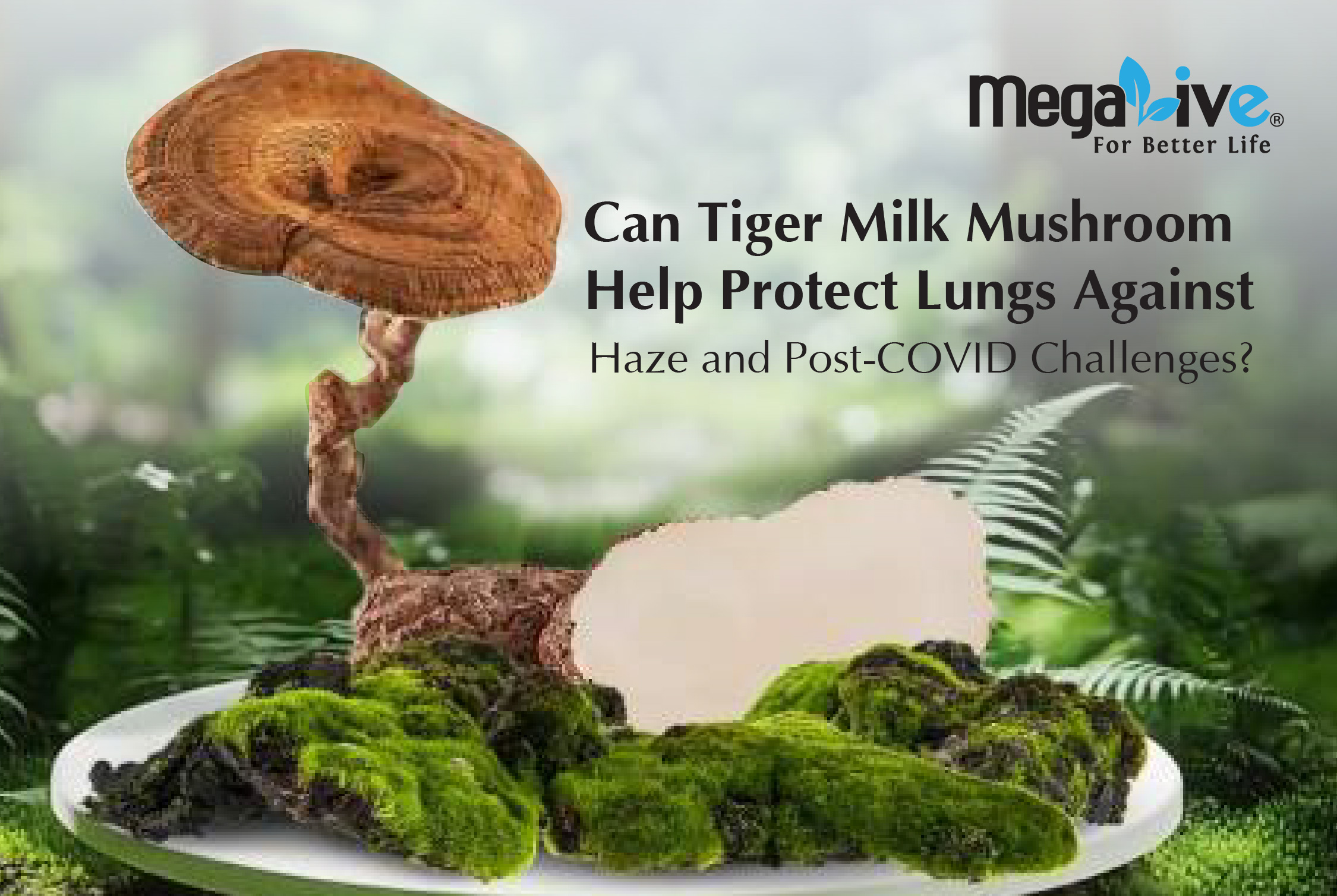Health Articles
Find out more about your health here from our health professionals!

Are You Taking Care of Your Nerves? 3 Essential Ways to Protect Nerve Health Naturally
Are You Taking Care of Your Nerves? 3 Essential Ways to Protect Nerve Health Naturally
Your nervous system plays a vital role in how your body feels, moves, and responds to the world around you. However, modern lifestyle factors such as chronic stress, insufficient rest, poor diet, and inactivity can gradually affect nerve function. Protecting your nerves does not require complex interventions. Simple, consistent habits can make a meaningful difference over time.
1. Maintain an Active Lifestyle
Regular physical activity promotes healthy blood circulation, which ensures that your nerves receive sufficient oxygen and nutrients to function effectively. Exercise also helps reduce inflammation and supports better communication between nerve cells, improving both coordination and response time. Even gentle activities such as walking, yoga, or stretching can enhance nerve resilience and contribute to overall mobility and vitality.[1]
2. Manage Stress and Get Enough Rest
Chronic stress and inadequate sleep can lead to the overproduction of stress hormones, which may damage nerve cells over time. Allowing your mind and body to rest through relaxation techniques such as deep breathing, meditation, or mindfulness helps restore balance to the nervous system. Prioritizing consistent, quality sleep supports the body’s natural repair processes and helps maintain long-term nerve health. [2]
3. Nourish with Antioxidants like ALA (Alpha Lipoic Acid)
Alpha Lipoic Acid (ALA) is a powerful antioxidant that protects nerves from oxidative stress by neutralizing harmful free radicals. It also plays a role in energy metabolism, supporting glucose utilization that fuels nerve cell function. Research has shown that ALA may help relieve symptoms of peripheral neuropathy, making it a valuable nutrient for maintaining nerve strength and protection. [3]
Caring for your nerves is an ongoing journey toward better health and vitality. By combining nutritional support, regular movement, and sufficient rest, you can help your nerves perform at their best. Over time, these small, intentional habits can improve your energy, comfort, and overall quality of life.
References:
1.Fava, A., et al. (2013). The effect of lipoic acid therapy on cognitive functioning in patients with Alzheimer’s disease. Journal of Neurodegenerative Diseases, https://pmc.ncbi.nlm.nih.gov/articles/PMC10442603/#:~:text=It%20can%20improve%20memory%20and,of%20cognitive%20decline%20and%20dementia.
2.Irwin, M. R. (2015). Why sleep is important for health: A psychoneuroimmunology perspective. Annual Review of Psychology, https://pmc.ncbi.nlm.nih.gov/articles/PMC4961463/
3.Gomes, B. A. Q., dos Santos, S. M., Gato, L. da S., Espíndola, K. M. M., da Silva, R. K. M., Davis, K., Navegantes-Lima, K. C., Burbano, R. M. R., Romao, P. R. T., Coleman, M. D., & Monteiro, M. C. (2021). Alpha-lipoic acid reduces neuroinflammation and oxidative stress induced by dapsone in an animal model. Antioxidants, 10(2), 277. https://www.mdpi.com/2072-6643/17/5/791#:~:text=The%20beneficial%20effects%20of%20ALA,the%20changes%20caused%20by%20DDS.

The Truth About Managing High Blood Pressure: Are You Doing It Right?

High blood pressure, often known as the “silent killer,” can quietly affect your body without noticeable symptoms until it’s too late. But here’s the good news: you have the power to take control of it. With the right habits, mindset, and consistency, you can protect your heart, improve your health, and live with greater energy and confidence.
1. Watch Your Diet
One of the most powerful steps you can take is to be mindful of what you eat. Reducing your salt intake can make a significant difference, and choosing fresh, natural foods over processed options helps your body thrive. Focus on nourishing yourself with whole grains, fruits, vegetables, and lean proteins. Add potassium-rich foods like bananas, sweet potatoes, and leafy greens, as they help balance your blood pressure naturally. This isn't about following a strict diet, but about embracing a lifestyle that supports your long-term health.
2. Stay Active
Staying active is equally important. Moving your body doesn’t have to be intense; it can be as simple as a 30-minute walk each day. Regular exercise boosts circulation, supports your heart, and lifts your mood. Every step you take and every stretch you do is a step toward stronger health.
3. Maintain a Healthy Weight
Your weight also plays a role in managing high blood pressure. But don’t think in terms of drastic changes. Start small and stay consistent. Even a little weight loss can reduce pressure on your arteries and improve your energy levels. It’s not about perfection; it’s about progress.
4. Manage Stress
Stress is another hidden contributor to high blood pressure. While we can’t always eliminate stress, we can learn how to manage it. Whether it’s deep breathing, quiet moments in nature, or practicing mindfulness, find what brings you calm and make it part of your daily rhythm. Your mind and body will thank you.
5. Take Supplements or Medications as Directed
If your doctor prescribes medication, take it exactly as instructed. In addition, some natural supplements like L-Arginine and L-Citrulline are known to support better blood flow and circulation. [1] L-arginine and L-citrulline are amino acids that can improve blood flow and circulation by increasing nitric oxide production. [2] Nitric oxide helps relax blood vessels, allowing for better blood flow and potentially improving exercise performance.These can be helpful additions, but always consult a healthcare provider before starting anything new.
Taking care of your blood pressure is not just about avoiding problems. It’s about choosing a vibrant, fulfilling life. Your heart works hard for you every second of every day. Let today be the day you start working just as hard for your heart. Small changes, made consistently, can lead to big results. Believe in your ability to take control of your health, because you deserve to feel strong, empowered, and full of life.
Reference:
- Oyovwi, M. O., & Atere, A. D. (2024). Exploring the medicinal significance of L-arginine mediated nitric oxide in preventing health disorders. European Journal of Medicinal Chemistry Reports. https://www.sciencedirect.com/science/article/pii/S2772417424000475#:~:text=When%20the%20body%20senses%20low,as%20atherosclerosis%20and%20heart%20disease.
- Allerton, T. D., & Ortega, J. F. (2018). L‑citrulline supplementation: impact on cardiometabolic health. Applied Sciences. https://pmc.ncbi.nlm.nih.gov/articles/PMC6073798/#:~:text=Supplementation%20with%20l%2Dcitrulline%20has,therapeutic%20impact%20on%20cardiometabolic%20health.
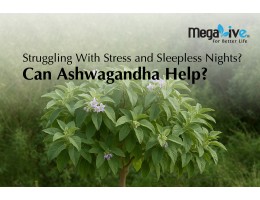
Struggling With Stress and Sleepless Nights? Can KSM-66 Ashwagandha Help?
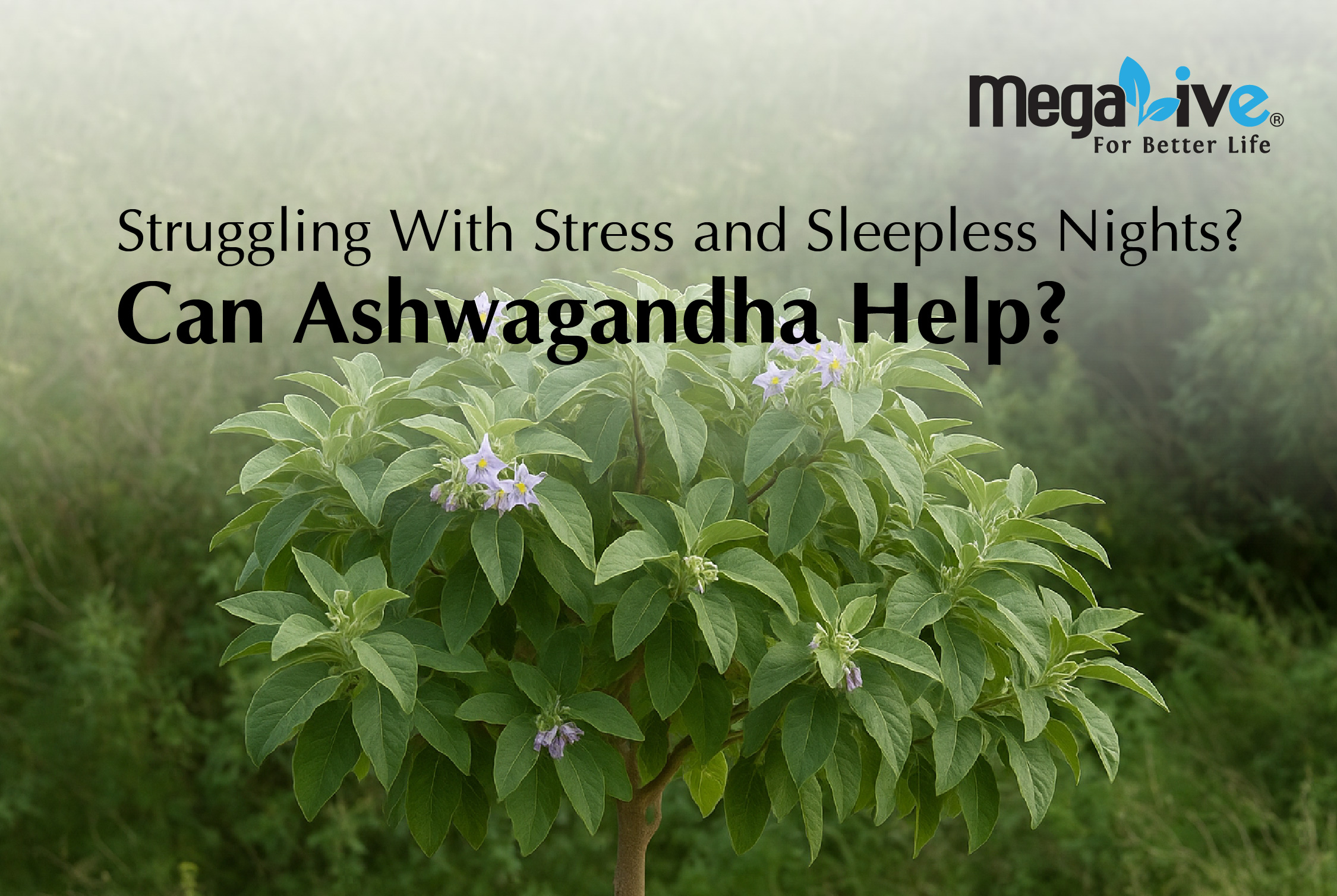
In today’s fast-paced world, many people struggle with stress, fatigue, and restless nights. Finding a natural way to support balance in the body and mind has become more important than ever. One traditional herb that has gained attention for its wide range of health benefits is Ashwagandha.
What Is KSM-66 Ashwagandha?
Ashwagandha (Withania somnifera) is a traditional herb that has been valued for centuries in natural wellness practices. KSM-66 Ashwagandha is a high-concentration root extract made using a proprietary “Green Chemistry” process without alcohol or chemical solvents. Clinical trials show it reduces stress, improves sleep, enhances memory and cognition, boosts endurance, strength, and immunity.
Unlike synthetic sleep aids or stress relievers that may lead to dependency, Ashwagandha is a nonaddictive natural adaptogen. This means it works with your body to restore balance, helping manage stress and support overall vitality without creating reliance or harmful side effects.[1]
Supports Stress Relief
Ashwagandha is best known for its ability to help the body manage stress. By regulating cortisol levels (the stress hormone), it promotes a calmer state of mind and helps reduce feelings of tension and overwhelm. The study demonstrated that Ashwagandha root extract (600 mg/day) significantly reduced stress and anxiety assessment scores and serum cortisol levels, compared to a placebo.[2]
Promotes Restful Sleep
High stress and busy thoughts often make it hard to fall asleep. Ashwagandha has calming properties that support relaxation, making it easier to enjoy deeper, more restorative sleep. The study demonstrated that Ashwagandha root extract (600 mg/day) significantly improved sleep onset latency, improve sleep quality and duration,compared to the placebo.[3]
Supports Cognitive Health
Studies suggest that Ashwagandha may improve memory, focus, and and information processing speed by reducing oxidative stress and supporting brain function.The study demonstrated that Ashwagandha root extract (600 mg/day) significantly improved immediate memory, general memory, executive function, and attention and information processing speed, compared to placebo in adults [4]
KSM-66 Ashwagandha is a time-tested, natural approach to modern day challenges such as stress, poor sleep, and mental fatigue. Its ability to calm the mind, support restorative rest, and enhance cognitive performance makes it a powerful ally for overall well-being. By making Ashwagandha part of your wellness journey, you can embrace a healthier, more balanced lifestyle, one where your body and mind feel supported every day.
Reference:
- Chandrasekhar, K., Kapoor, J., & Anishetty, S. (2012). A prospective, randomized double-blind, placebo-controlled study of safety and efficacy of a high-concentration full-spectrum extract of ashwagandha root in reducing stress and anxiety in adults. Indian Journal of Psychological Medicine, https://pubmed.ncbi.nlm.nih.gov/33338583/
- Langade, D., Kanchi, S., Salve, J., Debnath, K., & Ambegaokar, D. (2019). Efficacy and safety of Ashwagandha (Withania somnifera) root extract in insomnia and anxiety: A double-blind, randomized, placebo-controlled study. https://journals.sagepub.com/doi/10.4103/0253-7176.106022
- Choudhary, D., Bhattacharyya, S., & Bose, S. (2017). Efficacy and safety of ashwagandha (Withania somnifera (L.) Dunal) root extract in improving memory and cognitive functions. Journal of Dietary Supplements, https://www.cureus.com/articles/22928-efficacy-and-safety-of-ashwagandha-withania-somnifera-root-extract-in-insomnia-and-anxiety-a-double-blind-randomized-placebo-controlled-study#!/
- Verma, N., & Mishra, L. C. (2021). Safety of Ashwagandha root extract: A randomized, double-blind, placebo-controlled trial. PubMed Central. https://www.tandfonline.com/doi/full/10.1080/19390211.2017.1284970

Is Bacopa a Natural Companion for Your Well-Being?
In our ever-moving world, it’s common to feel mentally fatigued or emotionally unbalanced. Many of us seek gentle, natural ways to heal, not just for the mind but for the whole self. One such blessing from nature is Bacopa, a cherished herb known for supporting healthy blood flow, nurturing the mind, heart, and vitality.
Supporting Healthy Blood Flow
When blood flow feels sluggish or when your mind and body feel a little off balance, Bacopa may offer natural relief. Animal studies show that Bacopa can increase blood flow in the brain and heart, helping support better circulation and resilience. [1]
Cognitive Enhancement and Memory Support
Bacopa is lovingly regarded as a brain tonic. Research suggests it may enhance memory, support learning, and sharpen cognitive performance. Whether you’re studying, working, or simply wanting to stay mentally clear, Bacopa offers thoughtful support.[2]
Promoting Mental Clarity and Focus
In a world filled with distractions, concentration can be elusive. Bacopa gently soothes mental fog and helps foster clear, sustained focus without feeling pressured or overwhelmed. The research demonstrated significant improvements in cognitive performance (including mental arithmetic, Stroop, letter search, and visual tracking), accompanied by enhanced mood and a reduced cortisol response to stress.[3]
A Caring Companion for Well-Being
Bacopa is more than a natural herb. It is a caring companion for times when you seek clarity, calm, and understanding. Whether your goal is to improve memory, sharpen focus, ease stress, or support circulation, Bacopa gently nurtures mind and body alike.
In a world full of demands, Bacopa reminds us that nature offers gentle paths to restore balance, well-being, inner peace, and supporting healthy blood flow.
Reference:
1. Srimachai, S., Devaux, S., & Demougeot, C., et al. (2017). Bacopa monnieri extract increases rat coronary flow and protects against myocardial ischemia/reperfusion injury. BMC Complementary and Alternative Medicine, https://doi.org/10.1186/s12906-017-1637-z
2. Shahnawaz, Z., & Choudhary, D. (2021). Effect of Bacopa monnieri extract on memory and cognitive skills in adult humans: A randomized double-blind placebo-controlled study. Journal of Clinical & Medical Case Reports. https://www.gavinpublishers.com/article/view/effect-of-bacopa-monnieri-extract-on-memory-and--cognitive-skills-in-adult-humans-a-randomized-double-blind-placebo-controlled-study
3.National Center for Biotechnology Information. (2022). Bacopa Monnieri.StatPearls Publishing. https://www.ncbi.nlm.nih.gov/books/NBK589635/
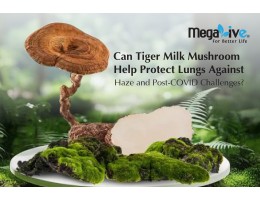
Can Tiger Milk Mushroom Help Protect Lungs Against Haze and Post-COVID Challenges?
References
- PharmDX. (n.d.). How does Tiger Milk Mushroom help to protect respiratory and lung health? Retrieved September 10, 2025, from https://pharmdx.com.my/how-does-tiger-milk-mushroom-help-to-protect-respiratory-and-lung-health/#:~:text=Immunomodulatory%20Effects,pathways%20and%20enhanced%20mucosal%20defense
- Baizigui. (n.d.). How Tiger Milk Mushroom benefits respiratory health. Retrieved September 10, 2025, from https://www.baizigui.com/en/blog/post/how-tiger-milk-mushroom-benefits-respiratory-health#:~:text=For%20individuals%20prone%20to%20respiratory,energy%20levels%2C%20speeding%20up%20recovery
- Abidin, N. Z., Abdullah, N., Abidin, I. Z., & Nulit, R. (2016). Lignosus rhinocerotis (Cooke) Ryvarden: A medicinal mushroom as a potential complementary therapy for allergic asthma. BMC Complementary Medicine and Therapies. https://doi.org/10.1186/s12906-016-1141-x
- Natural Health Store. (n.d.). Breathe easier: How Lignosus Tiger Milk Mushroom traditionally supports lung health. Retrieved September 10, 2025, from https://www.naturalhealthstore.ie/blog/breathe-easier-how-lignosus-tiger-milk-mushroom-traditionally-supports-lung-health#:~:text=Aboriginal%20mothers%20would%20give%20a,true%20gift%20from%20the%20earth

Who Can Benefit from CoQ10 Supplements?

Coenzyme Q10 (CoQ10) is a naturally occurring compound in our bodies that plays a vital role in energy production and heart health. While we all produce CoQ10, certain groups of people may benefit from supplementation due to lower natural levels or higher demands.
1. Older Adults
Our bodies’ natural CoQ10 production begins to decline after our 30s and 40s. This decrease can affect energy metabolism and the heart’s ability to function at its best. Supplementation helps replenish these reduced levels, supporting vitality, circulation, and overall cardiovascular wellness as we age. [1]
2. People Taking Cholesterol-Lowering Drugs
Cholesterol-lowering drugs such as statins medications block part of the cholesterol production pathway, which also affects the pathway that produces CoQ10. This can lead to fatigue, muscle aches, or weakness. Supplementing with CoQ10 helps restore the body’s supply, potentially reducing discomfort and improving energy. [2]
3. Individuals Seeking to Support Heart Health
For those with cardiovascular concerns such as reduced heart function, hypertension, or angina, CoQ10 supports healthy energy production in heart cells and helps maintain proper blood vessel function. Under medical guidance, it can complement other treatments for better cardiovascular performance. [3]
4. People with High Energy Demands or Fatigue Issues
CoQ10 is a key component in the mitochondria, the “powerhouses” of our cells, where energy (ATP) is produced. Those with intense physical activity or chronic fatigue may benefit from extra CoQ10 to sustain energy output, improve stamina, and support quicker recovery. [4]
Whether you are aiming to maintain heart health, counteract the side effects of certain medications, or boost your energy, CoQ10 can be a valuable ally. Always consult a healthcare professional before starting any supplement, especially if you are on medication or managing a health condition.
Reference:
-
Rabanal-Ruiz, Y., Llanos-González, E., & Alcain, F. J. (2021). The use of coenzyme Q10 in cardiovascular diseases. https://pmc.ncbi.nlm.nih.gov/articles/PMC8151454/#:~:text=CoQ10%20distribution%20is%20not%20uniform,the%20NO%20levels%20for%20vasodilation.
-
Fletcher, J. (2023, December 14). CoQ10 and statins: Connection, side effects, and more. Medical News Today. https://www.medicalnewstoday.com/articles/coq10-and-statins#definitions
-
Coenzyme Q10 – StatPearls. (2023). In StatPearls. StatPearls Publishing. Retrieved August 14, 2025, from https://www.ncbi.nlm.nih.gov/books/NBK531491/ ncbi.nlm.nih.gov

Don’t Ignore Poor Circulation, Here’s How to Improve It
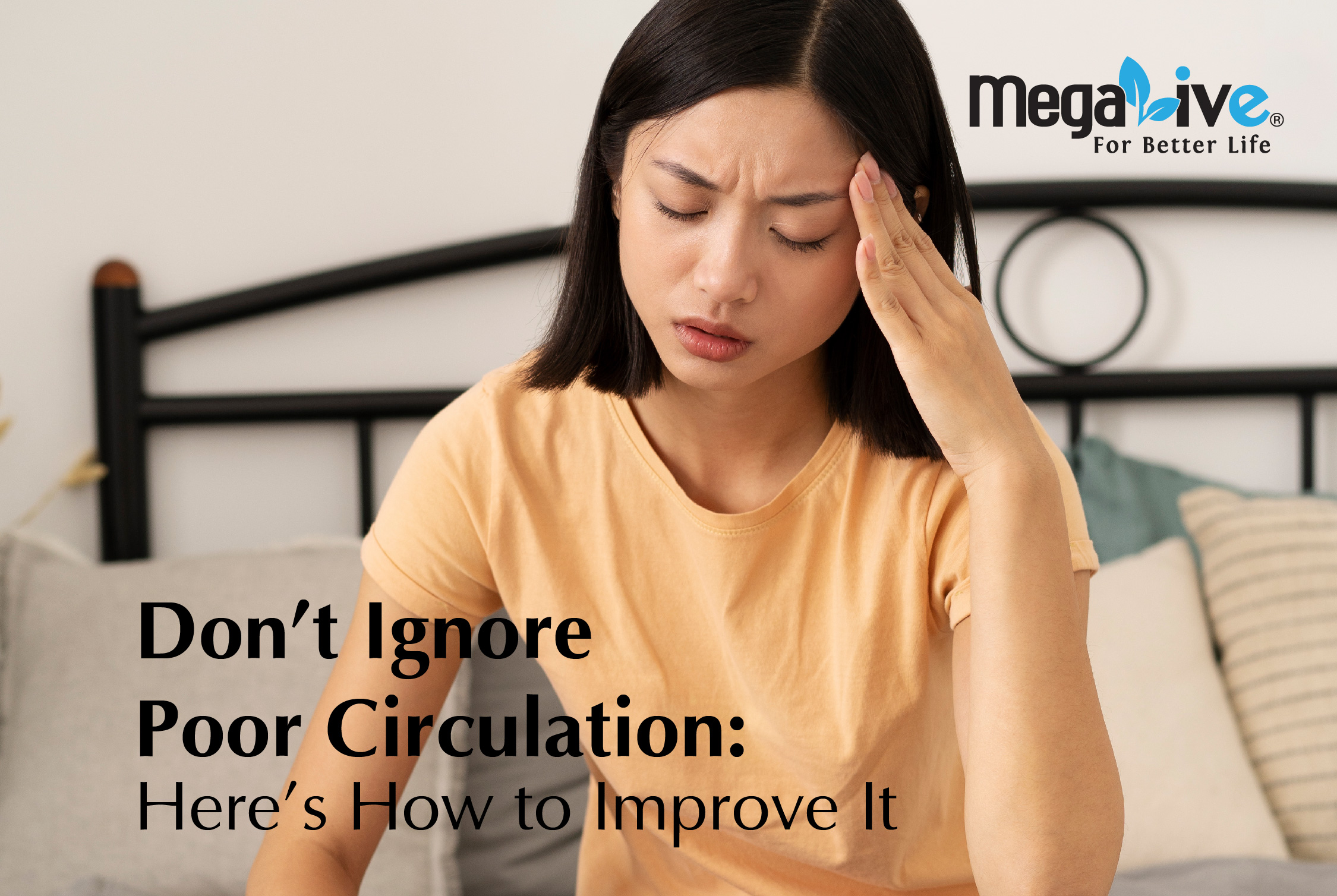
Good circulation is essential for delivering oxygen and nutrients throughout your body, supporting energy, healing, and overall health. Poor circulation can lead to fatigue, cold extremities, and even more serious cardiovascular problems over time. Here are five practical and proven ways to keep your blood flowing optimally.
1. Stay Physically Active
Regular movement keeps your heart strong and your blood vessels flexible. Activities such as brisk walking, cycling, swimming, or stretching help pump blood more efficiently. Aim for at least 30 minutes of moderate exercise most days of the week. Even short bursts of activity during the day—like taking the stairs or walking during breaks—can make a difference.
2. Eat a Circulation-Friendly Diet
What you eat has a direct impact on your circulation. Limit foods high in salt, sugar, and saturated fats, as they can negatively impact blood vessel health over time. These substances can contribute to high blood pressure, increased cholesterol levels, and inflammation, all of which can damage blood vessels.[1] Include foods rich in omega-3 fatty acids (such as salmon, tuna, and flaxseeds), antioxidants (berries, leafy greens, dark chocolate), and fiber (whole grains, beans, nuts).
3. Manage Stress
Chronic stress causes blood vessels to tighten, making it harder for blood to circulate efficiently. Try relaxation techniques like deep breathing, meditation, or yoga to help your body and mind unwind.
Bonus Tip: Gentle massage and stretching can also stimulate blood vessels and muscles, enhancing local circulation while promoting relaxation.
4. Include Circulation-Supporting Nutrients
Certain nutrients can help keep your blood vessels healthy and support efficient blood flow. Hawthorn berry extract is valued for its potential to support cardiovascular health and improve circulation. It may help lower blood pressure, reduce inflammation, and aid digestion, making it a beneficial addition to a circulation-supportive lifestyle.[2]
Improving circulation works best when these strategies are practiced together. Regular exercise, nutrient-rich eating, stress management, and targeted nutrients can keep your cardiovascular system in top shape—helping you feel more energetic and resilient every day.
Reference:
-
Windsor-Essex County Health Unit. (n.d.). Limit foods high in sodium, sugars, or saturated fat.https://www.wechu.org/limit-foods-high-sodium-sugars-or-saturated-fat
-
2. Lang, A., & Shoemaker, S. (2023, October 30). 9 impressive health benefits of hawthorn berry. Healthline. https://www.healthline.com/nutrition/hawthorn-berry-benefits#The-bottom-line
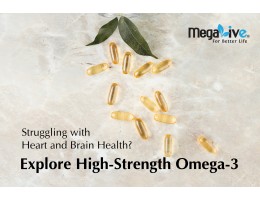
Struggling with Heart and Brain Health? Explore High-Strength Omega-3
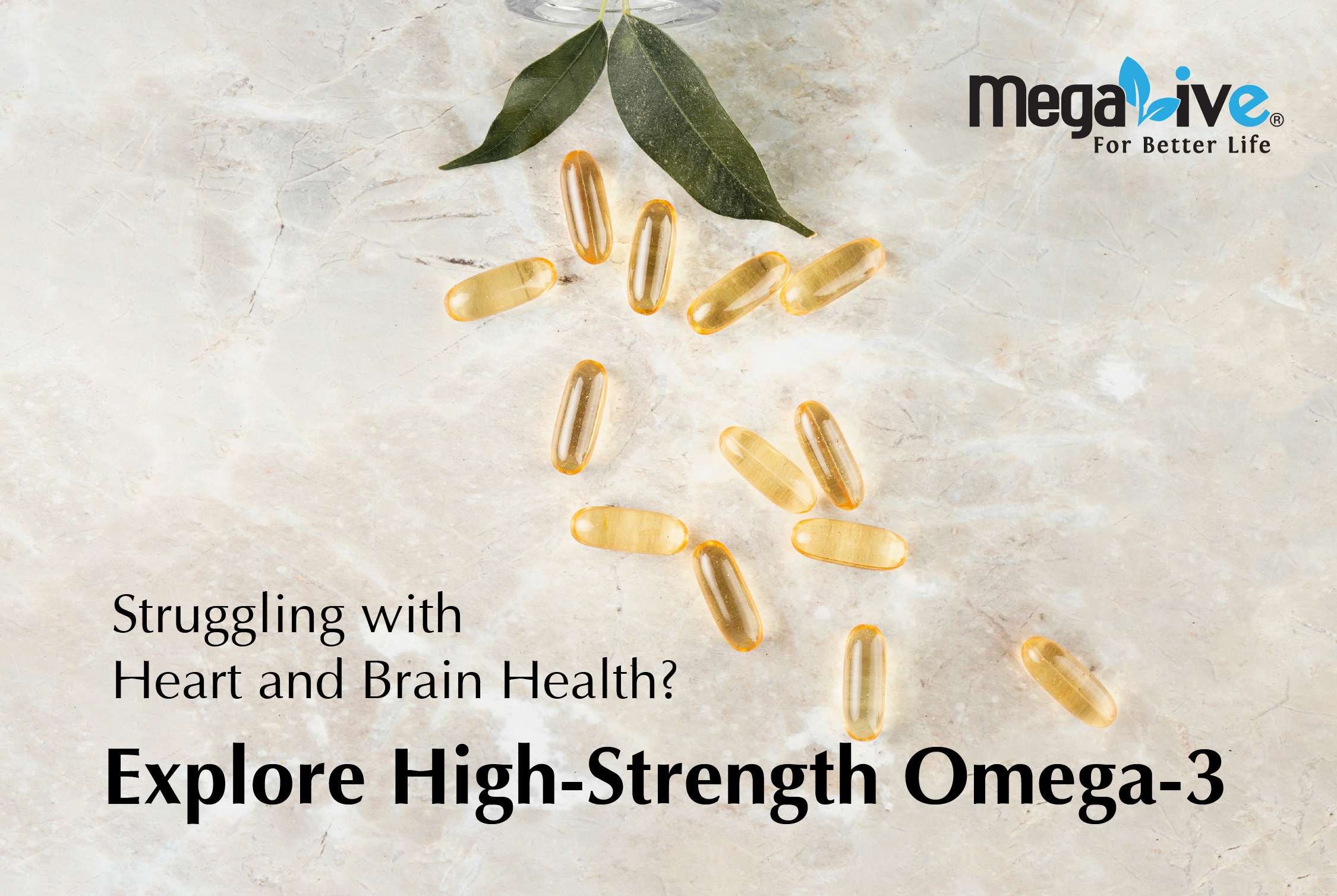
Standard fish oil capsules typically contain about 180 mg EPA and 120 mg DHA per 1,000 mg capsule. While these amounts are suitable for general wellness support, they may not be sufficient for individuals seeking more intensive benefits. A formulation with 700 mg EPA and 350 mg DHA provides over three times the typical dose, classifying it as high-strength.
1. Cardiovascular Support
Higher EPA and DHA levels can offer significant benefits for heart health. Research shows that these omega-3 fatty acids help reduce triglyceride levels, support healthy blood vessel function, and maintain optimal blood pressure.[1]
2.Brain Function and Cognitive Health
DHA is essential for maintaining the structure and function of brain cells, while EPA supports mood regulation and helps reduce neuroinflammation. A high-strength EPA and DHA formula may help support memory, focus, and overall cognitive performance, especially in older adults or those with greater mental demands.[2]
3.Anti-Inflammatory Benefits
EPA and DHA have natural anti-inflammatory properties that help modulate the body’s inflammatory response. For individuals experiencing joint discomfort, muscle recovery needs, or chronic inflammation, a higher-strength omega-3 supplement can provide more noticeable relief and recovery benefits compared to standard doses.[3]
While high-strength omega-3 supplements can enhance heart, brain, and inflammation support, they are best taken under the guidance of a healthcare provider—especially for those with existing health conditions or who are taking medication. Choosing the right dosage ensures safety, maximizes benefits, and supports overall wellness goals.
Reference:
-
Harvard Health Publishing. (2021, March 24). Omega-3 fatty acids and the heart: New evidence, more questions. Harvard Health Blog. https://www.health.harvard.edu/blog/omega-3-fatty-acids-and-the-heart-new-evidence-more-questions-2021032422213
-
Simopoulos, A. P. (2022). Ingestion of omega-3 fatty acids and cardiovascular health. https://www.ncbi.nlm.nih.gov/pmc/articles/PMC9641984/
-
Calder, P. C. (2013). Omega-3 (n-3) fatty acids and inflammatory processes: From molecules to man. PMC. https://www.ncbi.nlm.nih.gov/pmc/articles/PMC3575932/

Feel Calm and Balanced with Magnesium Bisglycinate

Magnesium is an essential mineral that supports hundreds of biochemical reactions in the body, yet many people today do not get enough of it through diet alone. Among the various forms of magnesium supplements available, magnesium bisglycinate stands out for its high bioavailability and gentle effect on the digestive system.
Support Muscle Relaxation and Reduce Cramps
Magnesium plays a critical role in muscle contraction and relaxation. Magnesium bisglycinate is often used to help relieve muscle tension, spasms, and cramps, especially for athletes or individuals prone to nighttime leg cramps [1].This form is absorbed efficiently by the body, allowing for faster and more noticeable relief of muscle discomfort .
Promote Better Sleep Quality
Magnesium bisglycinate is commonly recommended for people struggling with sleep issues. It helps calm the nervous system by enhancing the activity of GABA (gamma-aminobutyric acid), a neurotransmitter that promotes relaxation. Magnesium may play a role in regulating GABA, which could help promote calm and improve sleep.[2]
Reduce Stress and Anxiety
Studies have shown that magnesium supplementation helps relieve common stress-related symptoms, such as fatigue, irritability, and sleep disturbances. Among individuals under stress, a daily intake of 250–400 mg of magnesium has been linked to various benefits, including lower cortisol levels, increased red blood cell magnesium, and improved heart rate variability, which reflects better stress response via the parasympathetic nervous system.[3]
Final Thought
Whether you're dealing with tight muscles, sleepless nights, or a racing mind, magnesium bisglycinate offers a gentle, effective way to restore balance. It’s a smart choice for those seeking daily support for stress, sleep, and muscle health. Adding magnesium bisglycinate to your wellness routine may be the small change that brings a big sense of calm.
References:
-
Rogeberg, A. M. L., & Størkson, R. V. (2021). Magnesium in the treatment of leg cramps: A literature review. Scandinavian Journal of Primary Health Care, 39(1), 5–10. https://www.ncbi.nlm.nih.gov/pmc/articles/PMC8020016/
-
Sandoiu, A. (2023). Magnesium for sleep: Benefits and risks. Medical News Today. https://www.medicalnewstoday.com/articles/magnesium-for-sleep
-
Pickering, G., Mazur, A., Trousselard, M., Bienkowski, P., Yaltsewa, N., Amessou, M., Noah, L., & Pouteau, E. (2020). Magnesium status and stress: The vicious circle concept revisited.

Move Freely with Gentle Ways to Ease Joint Pain

Joint pain can sometimes feel like a quiet burden, making it harder to enjoy the little things in life, like morning walks, traveling with our family, or simply cleaning the house. But the good news is, with a few mindful habits and a little self-care, you can take steps toward feeling more comfortable, more mobile, and more like yourself again.
Here are four gentle ways to support your joints and soothe discomfort, all rooted in care, not just cure.
1. Keep Moving with Low-Impact Exercise
Movement is truly medicine, especially when it is gentle. Low impact exercises like walking in nature, swimming, cycling through the park, or flowing through yoga stretches can work wonders. They help strengthen the muscles that support your joints and keep your body flexible and free [1]. You do not need to push hard, just move with love and consistency.
2. Love Your Body at a Healthy Weight
Carrying extra weight can add pressure to your joints, especially your knees and hips. Let your body feel lighter, not for appearance, but for comfort. Even a small shift in weight can ease the strain. Studies show that even modest weight loss can lead to significant improvements in joint function and quality of life [2].
3. Anti-Inflammatory Eating for Healing
What you put on your plate can truly uplift how your joints feel. Embrace colorful, healing foods like salmon, ginger, turmeric, and berries [3]. Turmeric’s anti inflammatory benefits, along with other nutrient rich options, can help relieve joint discomfort and improve your overall well-being. Say goodbye to knee pain naturally. Every meal is a chance to nourish your body, and it is beautiful to choose wellness one bite at a time.
4. Consider Natural Supplements
If you are looking for extra support in maintaining joint health, certain natural supplements might be worth considering. One such option is Piper Nigrum extract, commonly known as black pepper extract. Research shows it may help reduce inflammation, relieve pain, and improve joint health in arthritis [4]. But remember, nature works best when guided by knowledge. Always check with your healthcare provider before adding anything new.
Pain does not define you, and it does not have to hold you back. Through movement, nourishment, rest, and a little extra care, you can give your joints the love they need. Small changes can lead to beautiful transformations. Take it one day at a time. Your body is listening, healing, and responding.
References
1. Mayo Clinic. (2022). Arthritis: Self-care. Retrieved July 9, 2025, from https://www.mayoclinic.org/diseases-conditions/arthritis/in-depth/arthritis/art-20047971
2. Fagundes, D. (n.d.). Impacto do peso corporal na saúde do joelho [The impact of body weight on knee health]. Retrieved July 9, 2025, from https://www.diogofagundes.com/en/blogs/news/impacto-do-peso-corporal-na-saude-do-joelho
3. Foods to relieve knee pain: The top 10 foods to support your joint health. Retrieved July 10, 2025, from https://orthopedicdoctorinjaipur.com/foods-to-relieve-knee-pain/#:~:text=The%20Top%2010%20Foods%20to,to%20support%20your%20joint%20health
4. Bang, J. S., Oh, D. H., Choi, H. M., Sur, B.-J., Lim, S.-J., Kim, J. Y., … Kim, K. S. (2009). Anti‑inflammatory and antiarthritic effects of piperine in human interleukin 1β‑stimulated fibroblast‑like synoviocytes and in rat arthritis models. Arthritis Research & Therapy, https://pmc.ncbi.nlm.nih.gov/articles/PMC2688199/#:~:text=The%20in%20vitro%20anti%2Dinflammatory,volume%2C%20and%20weight%20distribution%20ratio.

Discover What’s Slowing You Down

Joint pain doesn’t have to define your days. The first step to overcoming it is understanding what’s causing it. By identifying the source, you can start making small, powerful changes that lead to greater comfort and freedom. Here’s a breakdown of the most common causes and how to take charge of your joint health.
1. Osteoarthritis
Osteoarthritis is the most common cause of joint pain, especially as we age. It occurs when the cartilage that cushions the ends of your bones gradually wears down. This leads to bones rubbing together, causing pain, stiffness, and swelling. But with the right support from movement, nutrition, and care, you can manage symptoms and keep moving with ease [1].
2. Injury or Overuse
Injuries from sports, falls, or daily repetitive movements can strain your joints. Repetitive stress (like running or heavy lifting) can lead to long-term inflammation or damage to ligaments and tendons. Prevention and recovery are both within reach. Warm up, cool down, and give your body the rest it needs to heal and grow stronger [2].
3. Poor Posture or Sedentary Lifestyle
Sitting for long hours or poor posture can lead to muscle imbalance and joint stiffness. Over time, this puts unnecessary stress on your joints especially your back, knees, and hips [4]. But the good news is: gentle movement, stretching, and mindful posture can reverse this damage and help you feel better every day[3].
Hydrolyzed Marine Collagen Peptide is one of a nutrient that supports joint health from within. It helps maintain healthy cartilage by balancing the natural cycle of cartilage breakdown and repair, ensuring your joints stay strong and flexible. Its also promotes faster cartilage regeneration, which may help prevent and reduce joint erosion over time. If you're looking for a food-based way to care for your joints, incorporating Hydrolyzed Marine Collagen Peptide into your routine could be a valuable step toward greater comfort and mobility.
You don’t have to accept joint pain as part of your “normal.” Small, consistent lifestyle changes like daily walks, simple stretches,mindful posture and the right supplements supplement can improve your comfort and mobility.
Reference:
1.Mayo Clinic. (n.d.). Arthritis - Symptoms and causes. https://www.mayoclinic.org/diseases-conditions/arthritis/symptoms-causes/syc-20350772
2. National Institute of Arthritis and Musculoskeletal and Skin Diseases. (n.d.). Sports injuries. U.S. Department of Health and Human Services. https://www.niams.nih.gov/health-topics/sports-injuries
3.McAleese, E. (n.d.). The risks of sedentary behaviour for musculoskeletal health. MSK Doctors. https://search.mskdoctors.com/doctors/ella-mcaleese/articles/the-risks-of-sedentary-behaviour-for-musculoskeletal-health
4.Lin, C.-R., Tsai, S. H. L., Huang, K.-Y., Tsai, P.-A., Chou, H., & Chang, S.-H. (2023). Analgesic efficacy of collagen peptide in knee osteoarthritis: A meta-analysis of randomized controlled trials. Orthopaedic Surgery and Research, https://doi.org/10.1186/s13018-023-04151-7

Super Eye Squad for Kids: Be a Hero to Your Eyes
Hey there, young adventurer!
Did you know… your eyes are like tiny supercomputers that help you explore the world, read magical stories, play awesome games, and spot your favorite ice cream truck from a mile away?
But just like superheroes need armor, your eyes need protection too! Don’t worry — you don’t need a cape to join the Super Eye Squad. All you need are these 5 fun tips to keep your eyes happy and strong!
1. Munch on Eye-Power Snacks
Wanna give your eyes superpowers? Eat like an Eye Hero! Foods like carrots, spinach, eggs, and oranges are packed with vitamins and powerful antioxidants like lutein and zeaxanthin that help your eyes shine bright.
Fun Fact: Carrots are full of vitamin A[2], a top-secret agent for super sight, especially at night! Lutein and Zeaxanthin[3], found in corn and leafy greens like spinach and kale, act as bodyguards for your eyes, protecting them from harmful light and keeping your vision sharp.
2. Screen Breaks
Love video games and cartoons? We do too! But staring at screens for too long can make your eyes tired. That’s why the Super Eye Squad follows the 20-20-20 rule:
Every 20 minutes, look at something 20 feet away for at least 20 seconds [1].
It’s like doing eye yoga — super relaxing!
3. Clean Hands, Happy Eyes
Always wash your hands before touching your eyes. Germs can sneak in and cause itchy, red eyes (yuck!). So scrub those hands like you're prepping for surgery… or baking cookies [4].
4. Blink Like You Mean It!
When you're focused on a game or a book, you blink less. This dries out your eyes. Remember to blink often — it's like giving your eyes a mini shower!
5. Good Lighting = Good Reading
Reading in the dark makes your eyes work extra hard (and they don’t like overtime!). Always read or draw in a bright, well-lit room to keep your eyes comfy [5].
BONUS: Eye Checkups = Secret Missions
Every hero gets a health check, and so should you! Visiting the eye doctor helps catch problems early. You might even get to try cool machines and pick out awesome glasses [6].
Mission Complete!
Now you know how to protect your eyes like a real superhero. So put on your sunglasses, grab a crunchy carrot, and blink your way to victory!
Welcome to the Super Eye Squad — your mission: Keep your eyes strong and sparkle bright!
References:
1. Nall, R. (2024). Does the 20-20-20 rule prevent eye strain? Medical News Today. https://www.medicalnewstoday.com/articles/321536
2. Sulaiman, S. A., & Tan, S. H. (2022). Visual field decline and restoration following vitamin A therapy for nutritional vitamin A deficiency. Journal of Clinical and Translational Science, 6(1), e23. https://www.sciencedirect.com/science/article/pii/S2451993622002171
3. Zhou J, Wang F, Zhou S, et al. (2020). Effect of lutein, zeaxanthin, blackcurrant, chrysanthemum, and goji berry on visual function and eye fatigue: A randomized, double-blind, placebo-controlled trial. Am J Clin Nutr. https://www.sciencedirect.com/science/article/pii/S0002916522008036
4. Kadrmas Eye Care New England. (n.d.). Handwashing and other ways to prevent eye infections this winter: Handwashing Awareness Week. Kadrmas Eye Care New England.
5. Ang, B. (2024, January 12). Lighting for reading. Vision and Eye Health. https://www.vision-and-eye-health.com/lighting/Vision and Eye Health+1Vision and Eye Health+1
6. Patel, H. H. (2019, February 26). Importance of regular eye checks and the check-up procedure. News-Medical. https://www.news-medical.net/health/Importance-of-Regular-Eye-Checks-Procedure.aspx

See the World Clearly - Empower Your Vision with Healthy Habits
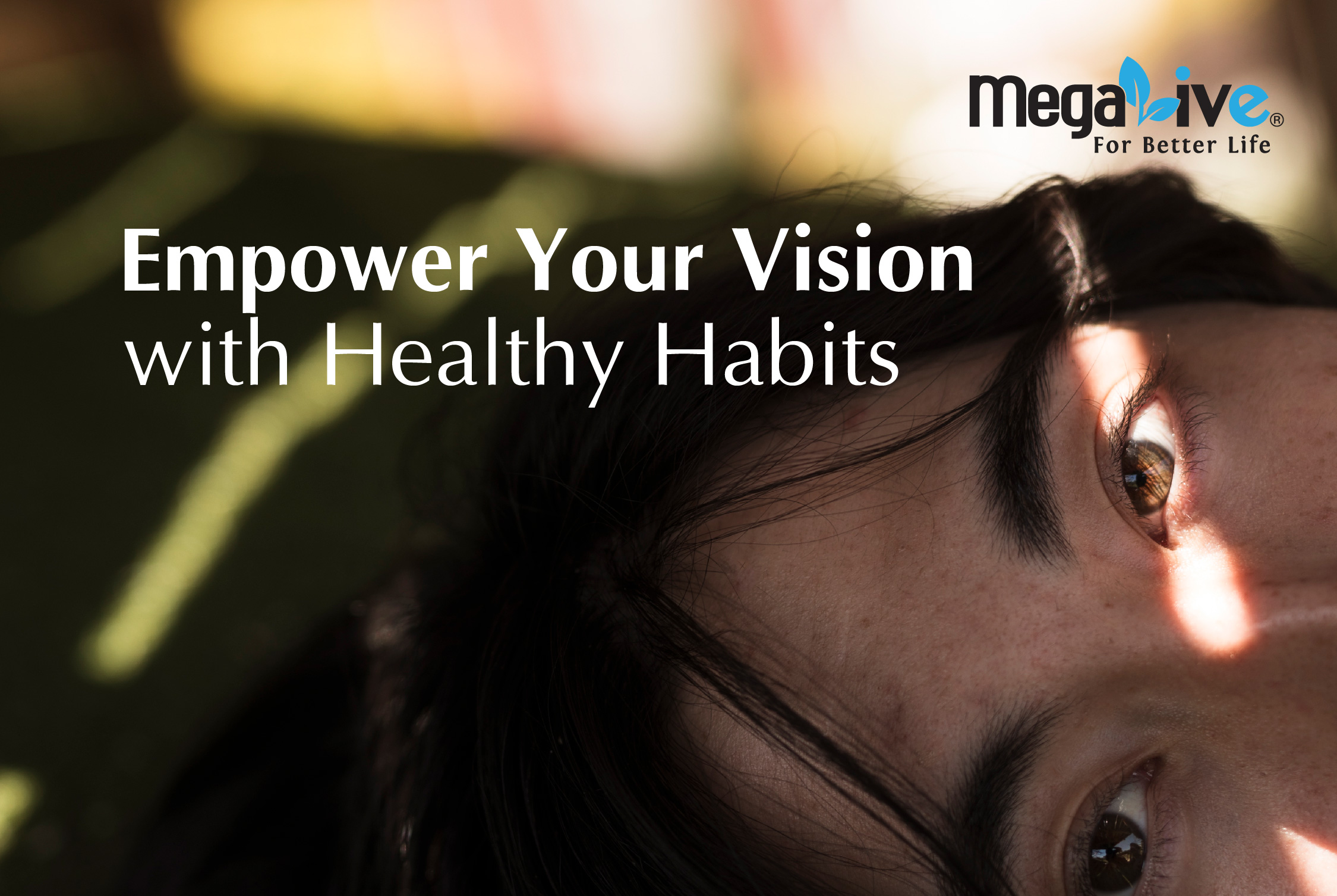
Our eyes are one of the most vital and delicate parts of our body, yet they are often overlooked when it comes to self-care. With the increasing use of digital screens, environmental stress, and the natural aging process, maintaining eye health is more important than ever. Here are some essential tips to help you protect and improve your vision for years to come.
1. Follow the 20-20-20 Rule
If you spend long hours in front of a screen, you may experience eye strain, dry eyes, or blurry vision. To reduce digital eye strain, follow the 20-20-20 rule:
Every 20 minutes, take a 20-second break and look at something 20 feet away. This helps relax the eye muscles and reduce fatigue [1].
2. Eat a Balanced Diet for Healthy Eyes
The saying "you are what you eat" rings true when it comes to eye health. Nutrient-rich foods provide the necessary vitamins and minerals to support vision. Some key nutrients to include in your diet are:
-
Lutein and Zeaxanthin: These antioxidants help protect the retina from harmful light and oxidative stress. Foods like spinach, kale, and other leafy greens are rich in these nutrients [2].
-
Vitamin A: Essential for good vision, especially in low light. Sources of vitamin A include carrots, sweet potatoes, liver and fish [3].
3. Protect Your Eyes from UV Rays
Global atmospheric changes, such as ozone depletion in the stratosphere, have led to increased ultraviolet (UV) radiation on Earth. This heightened UV exposure can adversely affect human health and has been linked to serious eye conditions, including cataracts and retinal degeneration [4].
UV rays may cause damage through the formation of free radicals, which can lead to protein modification and lipid peroxidation in eye tissues.
To reduce the risk, always wear suitable UV-protective glasses when outdoors. Wraparound sunglasses that block 100% of UVA and UVB rays provide the best protection.
4. Consider Eye Supplements
If you are concerned about your eye health or have a family history of eye diseases, consider taking eye supplements. Strong recommend for products are rich in ingredients like Lutein and Zeaxanthin, which are scientifically proven to support healthy vision and reduce the risk of macular degeneration and other age-related eye problems.
5. Schedule Regular Eye Check-Ups
Regular eye exams are essential for detecting eye conditions early, even before symptoms appear. These exams not only assess vision clarity but also check for diseases such as retinal detachment, glaucoma, development of cataracts, and macular degeneration. Early detection through routine check-ups can prevent vision loss and ensure timely treatment to maintain healthy eyes [6].
Conclusion
Your eye health deserves as much attention as any other part of your body. By maintaining a balanced diet, protecting your eyes from UV rays, following healthy screen habits, and scheduling regular eye exams, you can keep your eyes in top condition for many years. Remember, small lifestyle changes can make a huge difference in your overall vision health
References:
1. Nall, R. (2024). Does the 20-20-20 rule prevent eye strain? Medical News Today. https://www.medicalnewstoday.com/articles/321536
2. Roberts, J. E., & Dennison, J. (2015). The photobiology of lutein and zeaxanthin in the eye. Journal of Ophthalmology, 2015, Article 687173. https://pmc.ncbi.nlm.nih.gov/articles/PMC4698938/
3. Sulaiman, S. A., & Tan, S. H. (2022). Visual field decline and restoration following vitamin A therapy for nutritional vitamin A deficiency. Journal of Clinical and Translational Science, 6(1), e23. https://www.sciencedirect.com/science/article/pii/S2451993622002171
4. Van Kuijk, F. J. (1991). Effects of ultraviolet light on the eye: Role of protective glasses. Environmental Health Perspectives, 96, 177–184. https://www.jstor.org/stable/3431229
5. Zhou J, Wang F, Zhou S, et al. (2020). Effect of lutein, zeaxanthin, blackcurrant, chrysanthemum, and goji berry on visual function and eye fatigue: A randomized, double-blind, placebo-controlled trial. Am J Clin Nutr. https://www.sciencedirect.com/science/article/pii/S0002916522008036
6. Patel, H. H. (2019, February 26). Importance of regular eye checks and the check-up procedure. News-Medical. https://www.news-medical.net/health/Importance-of-Regular-Eye-Checks-Procedure.aspx

Is Your Daily Routine Secretly Causing Dry and Strained Eyes?

In our modern world, many people suffer from dry and strained eyes, especially with the rise of digital device use and changing environmental factors. These common eye problems can cause discomfort, affect productivity, and reduce quality of life if left unaddressed. Understanding their causes and how to prevent or treat them is essential for maintaining good eye health.
What Causes Eye Strain?
Eye strain happens when your eyes get tired from intense use. It commonly occurs during activities like reading, working on a computer, or focusing on detailed work for long periods without breaks.
Common causes of eye strain include:
1. Prolonged Screen Time (Digital Eye Strain)
1.1 Reduced Blinking: When we focus on digital screens, we tend to blink less, leading to dry eyes and eye strain.
1.2 Poor Screen Resolution and Contrast: Low-quality screens with poor contrast or improper brightness can strain the eyes.
1.3 Glare: Reflections from screens can cause discomfort and eye strain.
1.4 Improper Viewing Distance: Being too close to a screen or having improper screen positioning can exacerbate eye strain[1].
1.5 Oxidative stress:Oxidative stress remains a significant concern, particularly for vulnerable populations such as the elderly or individuals with preexisting retinal conditions. Cumulative blue light exposure from both digital devices and sunlight may contribute to retinal cell damage and potentially increase the long term risk of age related macular degeneration (AMD)[6].
2. Intense Focus Activities
2.1 Reading: Reading for extended periods, especially without breaks, can fatigue the eye muscles.
2.2 Driving: Driving long distances or engaging in other activities that require continuous focus can cause eye strain.
2.3 Detailed Work:Tasks involving close-up work, such as sewing or crafting, can strain the eyes. [2].
3. Environmental Factors
3.1 Bright Light or Glare: Excessive exposure to bright light or glare can tire the eyes [3].
3.2 Dry Air: Dry or polluted environments and places with fans and heating and cooling units may irritate or dry out eyes, leading to eyestrain[4].
Conclusion
Strained eyes are common in today’s digital age but don’t have to interfere with your daily life. By understanding their causes and adopting healthy habits in our upcoming health articles, you can protect your eyes, reduce discomfort, and maintain clear, comfortable vision.
References:
-
Kaur, K., Gurnani, B., Nayak, S., Deori, N., Kaur, S., Jethani, J., Singh, D., Agarkar, S., Hussaindeen, J. R., Sukhija, J., & Mishra, D. (2022). Digital eye strain—A comprehensive review. Ophthalmology and Therapy. https://pmc.ncbi.nlm.nih.gov/articles/PMC9434525/
-
American Academy of Ophthalmology. (n.d.). Computers, digital devices, and eye strain. Retrieved May 23, 2025. https://www.aao.org/eye-health/tips-prevention/computer-usage
-
BenQ. (n.d.). Protective peepers: The best eye-caring desk lamps for comfortable computing and study. BenQ. Retrieved May 23, 2025, from https://www.benq.com/en-my/knowledge-center/knowledge/eye-caring-desk-lamp-for-computer-and-studying.html
-
Silver, N. (2024, August 29). Eyestrain: Causes, tips for prevention, and treatments. Healthline. Retrieved May 23, 2025, https://www.healthline.com/health/eye-health/eye-strain#eye-drops
-
Chakravarthy, H., Georgyev, V., Wagen, C., Hosseini, A., & Matsubara, J. (2024). Blue light-induced phototoxicity in retinal cells: Implications in age-related macular degeneration. Frontiers in Aging Neuroscience, https://pmc.ncbi.nlm.nih.gov/articles/PMC11685196/

Proactive Steps to Maintain Liver Health
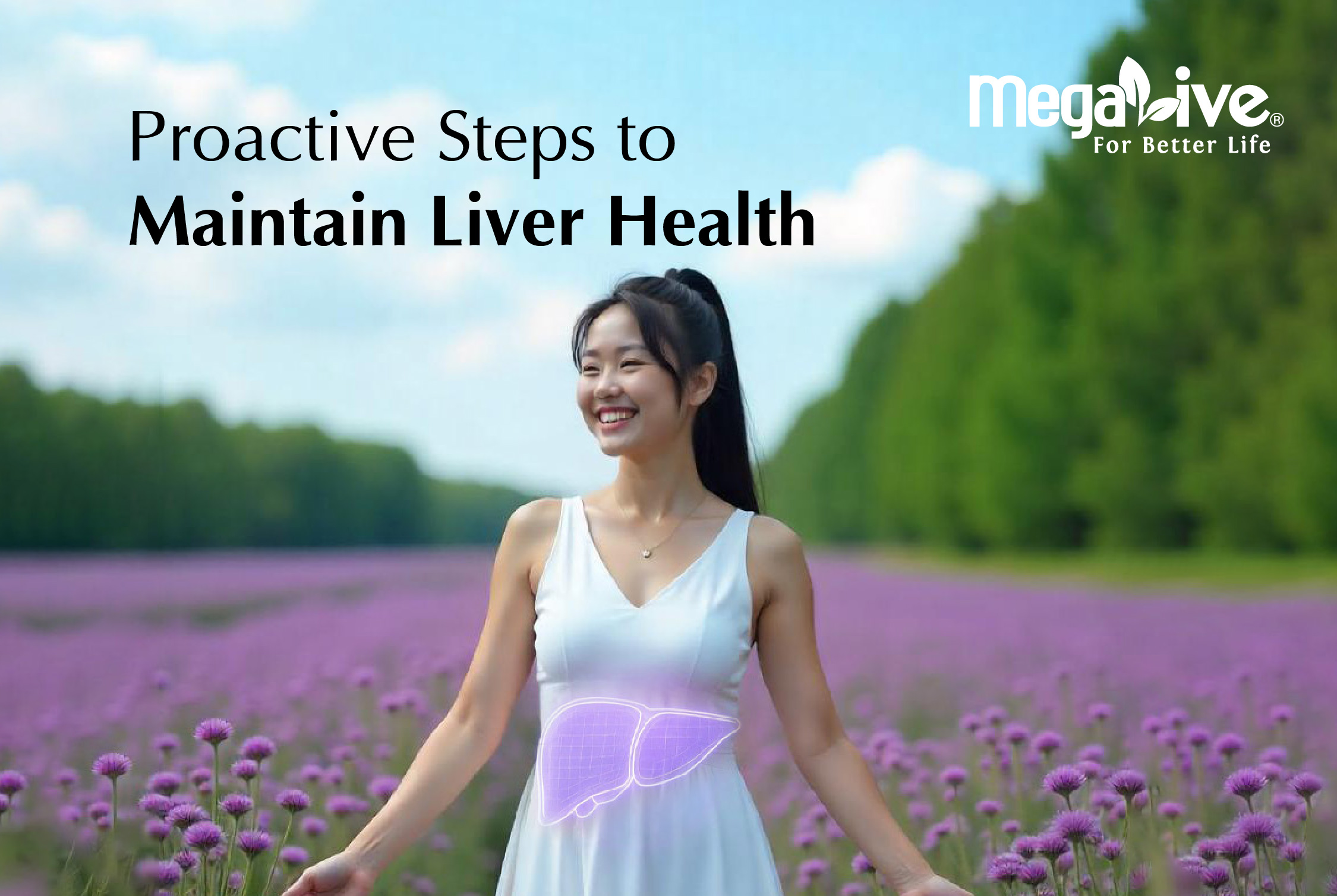
The liver is one of the most vital organs in the human body, responsible for filtering toxins, metabolizing nutrients, and supporting digestion. However, poor lifestyle choices, an unhealthy diet, and certain medical conditions can put the liver at risk of disease. Taking proactive steps to maintain liver health can prevent serious complications and promote overall well-being. Here are some key ways to protect the liver and reduce the risk of liver disease.
1. Limit Alcohol Consumption
Excessive alcohol intake is a leading cause of liver damage, leading to conditions such as fatty liver disease, hepatitis, and cirrhosis [1]. It is recommended to:
-
Take alcohol-free days to allow the liver to recover.
-
Quit alcohol completely if diagnosed with liver disease to prevent further damage.
2. Practice Safe Medication Use
Overuse or misuse of medications, especially pain relievers like acetaminophen, can damage the liver. Always follow dosage recommendations, consult a doctor before mixing medications, and avoid self-medicating [2].
3. Incorporate Milk Thistle Extract
Milk thistle is an herbal supplement known for its potential liver-protecting properties. It contains silymarin, which supports liver health through its antioxidant activity [3]. Including milk thistle extract as part of a healthy routine may aid in maintaining liver function.
4. Get Enough Sleep
Quality sleep plays a crucial role in liver health. During sleep, the body undergoes essential repair and detoxification processes, helping the liver function optimally [4]. Aim for 7-9 hours of restful sleep each night to support overall liver function.
By making these lifestyle changes, individuals can safeguard their liver health and prevent the onset of serious liver diseases. A proactive approach ensures a longer, healthier life with optimal liver function.
References
-
World Health Organization. (n.d.). Alcohol. https://www.who.int/news-room/fact-sheets/detail/alcohol
-
U.S. Food and Drug Administration. (n.d.). Don’t Overuse Acetaminophen: https://www.fda.gov/consumers/consumer-updates/dont-overuse-acetaminophen#:~:text=But%20taking%20too%20much%20acetaminophen,take%20several%20days%20to%20appear
-
Gillessen, A., & Schmidt, H. H.-J. (2020). Silymarin as supportive treatment in liver diseases: A narrative review. https://pmc.ncbi.nlm.nih.gov/articles/PMC7140758/
-
Um, Y. J., Chang, Y., Jung, H.-S., Cho, I. Y., Shin, J. H., Shin, H., Wild, S. H., Byrne, C. D., & Ryu, S. (2021). Sleep duration, sleep quality, and the development of nonalcoholic fatty liver disease: A cohort study. https://pmc.ncbi.nlm.nih.gov/articles/PMC8528229/

Natural Support for Lifelong Movement
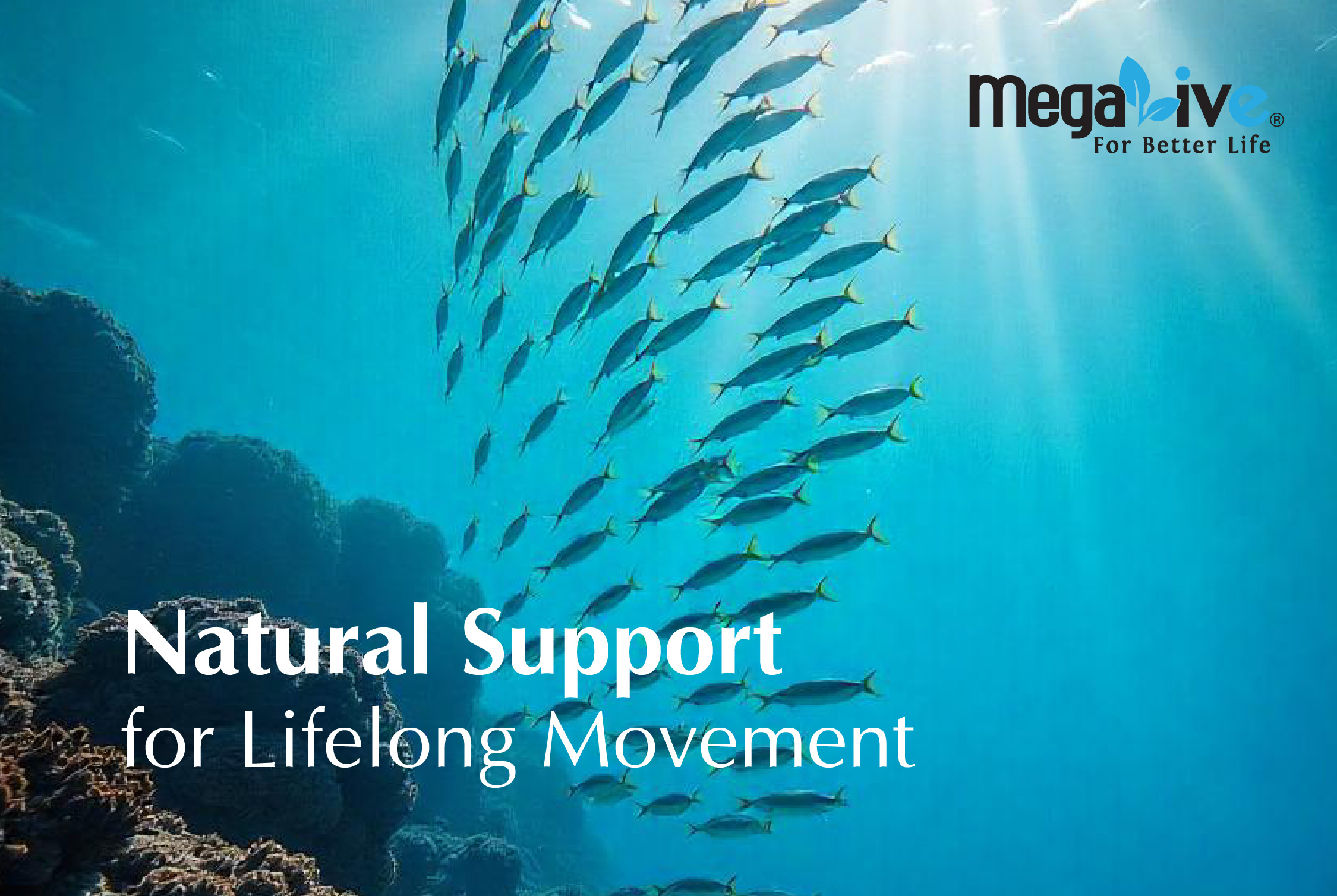
Our joints do so much for us every day—whether it is walking, bending, stretching, or simply getting through our daily activities. Taking good care of them is one of the best ways to maintain mobility, flexibility, and a pain-free life. As we age, or due to factors like lifestyle and activity levels, our joints may start to feel stiff or uncomfortable. But the good news is that nature provides us with ingredients that can help keep our joints strong and supple.
Let us take a closer look at three ingredients—hydrolyzed fish collagen, sodium hyaluronate, and Boswellia serrata—that can support joint health and overall well-being.
1.Hydrolyzed Fish Collagen
Collagen is like the glue that holds our joints together, providing strength and structure to cartilage and connective tissues. As we grow older, our body’s natural collagen production declines, which can lead to joint stiffness and discomfort. Hydrolyzed fish collagen is a type of collagen that has been broken down into smaller peptides, making it easier for our bodies to absorb. Research has shown that supplementing with hydrolyzed collagen may help improve joint comfort, flexibility, and even skin health [1].
2.Sodium Hyaluronate
Have you ever heard of hyaluronic acid? It is a substance that keeps our joints cushioned and hydrated. Sodium hyaluronate, a form of hyaluronic acid, acts like a natural lubricant inside our joints, helping them move smoothly. When our bodies do not produce enough of this essential compound, joints can feel dry and achy. Studies suggest that taking sodium hyaluronate as a supplement can support joint lubrication and even reduce discomfort in conditions like osteoarthritis [2].
3. Boswellia Serrata
Boswellia serrata, also known as Indian frankincense, has been used for centuries in traditional medicine for its ability to control inflammatory responses. The active compounds in this plant, called boswellic acids, have been found to help ease joint stiffness and improve mobility. Scientific studies show that Boswellia serrata extract may help individuals with joint discomfort regain their flexibility and enjoy daily activities more comfortably [3].
Whether through proper nutrition, gentle movement, or natural supplements, there are many ways to support joint health and maintain an active lifestyle. Small steps today can lead to a future where you continue to move freely, do what you love, and embrace life with ease.
Before adding any new supplements to your routine, it is always a good idea to check in with a healthcare professional to ensure they align with your individual needs. Here is to happy, healthy joints and a life full of movement and joy!
References
-
Guillerminet, F., Fabien-Soulé, V., Even, P. C., Tomé, D., & Lebecque, P. (2012). Hydrolyzed collagen improves bone metabolism and biomechanical parameters in ovariectomized mice: An in vitro and in vivo study. https://pubmed.ncbi.nlm.nih.gov/21927918/
-
Kalman, D. S., & Hewlings, S. J. (2016). A review of the effects of oral hyaluronan on chronic knee pain. Nutrition Journal, https://nutritionj.biomedcentral.com/articles/10.1186/s12937-016-0128-2
-
Sengupta, K., Alluri, K. V., Satish, A. R., Mishra, S., Golakoti, T., Sarma, K. V. S., Dey, D., & Raychaudhuri, S. P. (2008). A double blind, randomized, placebo controlled study of the efficacy and safety of 5-Loxin® for treatment of osteoarthritis of the knee. Arthritis Research & Therapy. https://pubmed.ncbi.nlm.nih.gov/18667054/

5 Loving Ways Reclaim Your Energy

Feeling drained? It is okay—you are not alone! Life can be exhausting, but the good news is that small changes can make a big difference. Here are five gentle, science-backed ways to help you feel refreshed, recharged, and ready to take on the day.
1. Prioritize Restful Sleep
Aim for 7–9 hours of quality sleep every night to restore your energy and mood. Regularly sleeping less than 7 hours per night on a regular basis is associated with adverse to obesity, diabetes, heart disease, depression, weakened immunity, impaired performance, and greater risk of accidents. [1] Try creating a cozy bedtime routine: dim the lights, drink milk, and put your phone away to help your mind unwind.
2. Stay Hydrated
Sometimes, fatigue is simply your body asking for more water. A lack of fluids can also cause your heart to work harder to pump oxygen all throughout your body [2]. The expended energy can make you feel tired and less focused. Sip on at least 8 glasses of water a day to keep your mind and body energized. Hydration = self-care.
3. Nourish Your Body with Panax Ginseng Root Extract
Panax ginseng supports the body with natural energy. Studies suggest that it helps improve energy levels and effectively relieve fatigue [3]. Adding a little ginseng to your routine may gently enhance your stamina and overall well-being.
4. Move with Love & Joy
Light jogging, aerobic workouts, cycling, swimming, or dancing to your favorite song with jumps and turns can wake up your system and brighten your mood. Moderate-intensity exercise interventions lasting at least six weeks are, on average, beneficial for fatigue, energy, and vitality [4]. Even small moments of movement can bring more energy and joy to your day.
Nourish your body and soul! When you prioritize rest and self-love, you will feel refreshed and recharged.
References
-
Consensus Conference Panel, Watson, N. F., Badr, M. S., Belenky, G., Bliwise, D. L., Buxton, O. M., Buysse, D., Dinges, D. F., Gangwisch, J., Grandner, M. A., Kushida, C., Malhotra, R. K., Martin, J. L., Patel, S. R., Quan, S. F., & Tasali, E. (2015). Recommended amount of sleep for a healthy adult: A joint consensus statement of the American Academy of Sleep Medicine and Sleep Research Society. Sleep. https://pmc.ncbi.nlm.nih.gov/articles/PMC4434546/#:~:text=):843%E2%80%93844.-,CONSENSUS%20STATEMENT,should%20consult%20their%20healthcare%20provider
-
National Council on Aging. (n.d.). 10 reasons why hydration is important. https://www.ncoa.org/article/10-reasons-why-hydration-is-important/
-
Zhang, G., Lu, B., Wang, E., Wang, W., Li, Z., Jiao, L., Li, H., & Wu, W. (2023). Panax ginseng improves physical recovery and energy utilization on chronic fatigue in rats through the PI3K/AKT/mTOR signaling pathway. Pharmaceutical Biology. https://pmc.ncbi.nlm.nih.gov/articles/PMC9879180/#:~:text=Short%2Dterm%20EEP%20supplementation%20resulted,a%20therapy%20herb%20against%20fatigue.
-
Wender, C. L. A., Manninen, M., & O'Connor, P. J. (2022). The effect of chronic exercise on energy and fatigue states: A systematic review and meta-analysis of randomized trials. https://pmc.ncbi.nlm.nih.gov/articles/PMC9206544/
-260x200.png)
How to Help Your Parents Prevent Osteoporosis
.png)
How to Help Your Parents Prevent Osteoporosis
As our parents get older, their bones naturally become weaker, making them more prone to osteoporosis—a condition that causes bones to become fragile and break easily. The good news is that there are simple ways to help them maintain strong bones and reduce the risk of fractures. By making small lifestyle changes and keeping up with regular health checkups, we can ensure our loved ones stay healthy and active. Here are some key ways to prevent osteoporosis.
- Ensure They Get Enough Calcium
Calcium is the building block of strong bones, and getting enough of it every day is essential. If our parents do not get enough calcium, their bodies will start taking it from their bones, making them weaker over time. It is recommended that adults over 50 consume 1,000 to 1,200 mg of calcium daily through calcium-rich foods or supplements. Encourage them to drink milk, eat yogurt, and enjoy cheese, as well as fortified foods like tofu and plant-based milk, are great choices. If they do not eat enough calcium-rich foods, a doctor might recommend a supplement to make up for the difference [1].
- Help Them Get Enough Vitamin D
Vitamin D is just as important as calcium because it helps the body absorb calcium properly. Without it, even a good diet will not be enough to keep bones strong. The best way to get vitamin D is through sunlight—just 10 to 30 minutes of sunlight a few times a week can help. But if our parents do not get much sun exposure, they can eat foods rich in vitamin D, such as salmon, eggs, and fortified dairy products. If necessary, a vitamin D supplement can also be helpful, especially for older adults [2].
- Encourage Regular Exercise
Exercise helps maintain bone density, build muscle, and improve balance, reducing the risk of falls and fractures [3]. Strength training and balance exercises, such as walking, are especially beneficial. Research has shown that tailored exercise plans, including Tai Chi, can significantly help prevent falls and improve balance in older adults [4].
By taking these simple steps, we can help our parents stay strong, active, and independent for years to come. Keeping their bones healthy is one of the best ways to show we care. A little encouragement and support can go a long way in ensuring they live a healthy and happy life!
References
- National Institutes of Health. (n.d.). Calcium - fact sheet for Health professional. https://ods.od.nih.gov/factsheets/Calcium-HealthProfessional/
- Giustina, A., Bouillon, R., Dawson-Hughes, B., Ebeling, P. R., Lazaretti-Castro, M., Lips, P., Marcocci, C., & Bilezikian, J. P. (n.d.). Vitamin D in the older population: A consensus statement. https://pmc.ncbi.nlm.nih.gov/articles/PMC9607753/
- Giangregorio, L. M., & Ponzano, M. (n.d.). Exercise and physical activity in individuals at risk of fracture. https://www.sciencedirect.com/science/article/abs/pii/S1521690X21001305
- Chen, W., Li, M., Li, H., Lin, Y., & Feng, Z. (2023). Tai Chi for fall prevention and balance improvement in older adults: A systematic review and meta-analysis of randomized controlled trials. Front Public Health. https://pmc.ncbi.nlm.nih.gov/articles/PMC10509476/#:~:text=Conclusion,with%20exercise%20time%20and%20frequency.
-260x200.png)
How to Choose a High-Quality Fish Oil Supplement
.png)
Fish oil supplements are a great source of omega-3 fatty acids, which play a crucial role in brain function, joint support, heart health, and inflammation reduction. However, not all fish oil supplements are created equal. With so many options available, choosing a high-quality product is essential to maximize health benefits and avoid contaminants.
This guide will help you identify what to look for when selecting a premium fish oil supplement to ensure purity, potency, and effectiveness.
1. EPA & DHA Content
The two most beneficial omega-3 fatty acids in fish oil are Eicosapentaenoic Acid (EPA) and Docosahexaenoic Acid (DHA). These essential fatty acids support heart health, brain function, and inflammation reduction【1】.
Tip: Some lower-quality fish oil supplements contain more fillers than actual omega-3s. Always check the label for EPA and DHA amounts, not just total fish oil content.
2. Choose Molecularly Distilled Fish Oil
Since fish can contain heavy metals and environmental toxins, it is crucial to choose a supplement that undergoes molecular distillation. This process helps remove mercury, lead, and other harmful contaminants, ensuring a pure and safe product.
Tip: Look for supplements labeled as “molecularly distilled” or “pharmaceutical grade,” as these have been purified to remove potential toxins【2】.
3. Enteric-Coated or Reflux-Free Formulas
A common issue with fish oil supplements is the fishy aftertaste or burps that some people experience. Enteric-coated capsules help prevent this by ensuring the oil is released in the intestines rather than the stomach, leading to reduced reflux【3】.
Tip: If you experience digestive discomfort after taking fish oil, try an enteric-coated supplement or taking it with meals.
By following these guidelines, you can make an informed decision and select a safe, effective, and high-quality fish oil supplement to support your overall health.
References
- Swanson, D., Block, R., & Mousa, S. A. (2022). Omega-3 fatty acids EPA and DHA: Health benefits throughout life. https://www.sciencedirect.com/science/article/pii/S2161831322009620
- Technology Networks. (2024). Fish vs fish oil supplements: Which is better for your health? Retrieved from https://www.technologynetworks.com/applied-sciences/articles/fish-vs-fish-oil-supplements-which-is-better-for-your-health-394642
- Healthline. (n.d.). Omega-3 supplement guide: What to buy and why. Retrieved from https://www.healthline.com/nutrition/omega-3-supplement-guide
-260x200.png)
Care for Your Urinary Health with Simple Daily Habits
.png)
Your urinary health plays a vital role in maintaining overall wellness. Supporting proper urination not only helps flush out toxins but also promotes kidney health and balances bodily functions. If you have trouble urinating or want to maintain a healthy urinary system, there are simple yet effective habits you can adopt. By making mindful choices in your daily routine, you can enhance your comfort, well-being, and quality of life.
1. Stay Hydrated
Water is the essence of life, and drinking enough of it ensures smooth and regular urination. Proper hydration helps flush out harmful toxins, supports kidney function, and prevents urinary tract infections (UTIs)【1】. Aim for at least 8 glasses of water daily or more if you are active or live in a hot climate.
2. Include Bladder-Friendly Foods
Your diet plays a crucial role in urinary health. Incorporate foods rich in antioxidants, such as berries, leafy greens, and citrus fruits, to promote bladder function. Cranberries and blueberries, contain compounds that help prevent bacterial adhesion in the urinary tract, reducing the risk of infections 【2】.
3. Herbal Support for Urinary Health
Certain natural herbs, such as celery seeds and traditional products that help improve urination, act as mild diuretics that can help regulate urination and support kidney function. These natural remedies have been traditionally used to aid fluid balance and detoxification 【3】.
4. Exercise Regularly
Physical activity improves blood circulation, which in turn supports kidney and bladder function. Pelvic floor exercises, such as Kegels, strengthen bladder control and reduce instances of leakage or incontinence, particularly in women and aging individuals 【4】.
5. Limit Irritants
Caffeine, alcohol, spicy foods, and artificial sweeteners can irritate the bladder and lead to frequent or uncomfortable urination. Moderation is key—reducing these triggers can help maintain a calm and well-functioning urinary system 【5】.
By adopting these simple yet caring habits, you can support your urinary health and enhance your overall well-being. When you prioritize the right care, your body flourishes—show love to your urinary system today and embrace a healthier, more comfortable future.
References
- Perrier, E. T., Armstrong, L. E., Bottin, J. H., Clark, W. F., Dolci, A., Guelinckx, I., Iroz, A., Kavouras, S. A., Lang, F., Lieberman, H. R., Melander, O., Morin, C., Seksek, I., Stookey, J. D., Tack, I., Vanhaecke, T., Vecchio, M., & Péronnet, F. (2021). Hydration for health hypothesis: A narrative review of supporting evidence. European Journal of Clinical Nutrition. https://pmc.ncbi.nlm.nih.gov/articles/PMC7987589/
- Jepson, R. G., Williams, G., & Craig, J. C. (2012). "Cranberries for preventing urinary tract infections." Cochrane Database of Systematic Reviews. https://www.cochranelibrary.com/cdsr/doi/10.1002/14651858.CD001321.pub5/full
- Fazal, S. S., & Singla, R. K. (2012). Review on the Pharmacognostical & Pharmacological Characterization of Apium graveolens Linn. Indo Global Journal of Pharmaceutical Sciences, https://www.researchgate.net/publication/231293003_Review_on_the_Pharmacognostical_Pharmacological_Characterization_of_Apium_Graveolens_Linn
- Dumoulin, C., Hunter, K. F., & Moore, K. (2018). "Pelvic floor muscle training versus no treatment for urinary incontinence in women: A Cochrane Review." Cochrane Database of Systematic Reviews. https://www.cochranelibrary.com/cdsr/doi/10.1002/14651858.CD005654.pub4/full
- Cleveland Clinic. (n.d.). Foods that irritate the bladder. Cleveland Clinic. Retrieved March 25, 2025, from https://health.clevelandclinic.org/foods-that-irritate-the-bladder

Simple Steps to Love Your Heart
Your heart works tirelessly for you every single day, so why not show it some love? Maintaining heart health is crucial for overall well-being. With heart disease being a leading cause of health concerns worldwide, a few simple lifestyle changes can make a big difference. Here are four loving ways to keep your heart happy and strong:

1. Eat a Heart-Healthy Diet
A balanced diet plays a vital role in maintaining heart health. Incorporate plenty of fruits, vegetables, whole grains, lean proteins, and healthy fats into your meals. Avoid processed foods high in saturated fats, trans fats, and sodium, as they can contribute to high cholesterol and blood pressure. Choose foods rich in omega-3 fatty acids, fiber, and antioxidants to promote better cardiovascular function.
2. Stay Physically Active
Your heart loves movement! Staying physically active helps strengthen your heart, improve circulation, and keep blood pressure and cholesterol in check. Aim for at least 150 minutes of heart-pumping activity each week, whether dancing, walking, swimming, or cycling—find something you enjoy! Even small changes, like taking the stairs or stretching during breaks, can make a meaningful difference.
3. Get Quality Sleep
Poor sleep habits can lead to high blood pressure, obesity, and increased risk of heart disease. Adults should aim for 7-9 hours of quality sleep per night. Establish a consistent sleep routine by going to bed and waking up at the same time daily. Reduce screen time before bed, create a comfortable sleeping environment, and manage stress to enhance sleep quality.
4. Bonus Tip: Take Health Supplements
While a well-balanced diet is the foundation of heart health, supplements can provide additional support. Nutrients such as Coenzyme Q10 (CoQ10), omega-3 fatty acids, magnesium, L-arginine and L-citrulline have been shown to support cardiovascular function.1 Scientific study stated that daily dosage of 30-60mg CoQ10 was recommended to prevent CoQ10 deficiency and maintenance purpose.2 Always consult with a healthcare professional before adding supplements to your routine to ensure they align with your health needs.
By following these heart-healthy habits, you can improve your cardiovascular well-being and lead a healthier, more energetic life. Your heart takes care of you, so take a little time each day to care for it too.
References:
1. Nyawose, S., Naidoo, R., Naumovski, N., & McKune, A. J. (2022). The effects of consuming amino acids L-arginine, L-citrulline (and their combination) as a beverage or powder, on athletic and physical performance: A systematic review.
2. Kumar, A., Kaur, H., Devi, P., & Mohan, V. (2009). Role of coenzyme Q10 (CoQ10) in cardiac disease, hypertension, and Meniere-like syndrome.

Nourishing Ingredients for Hair, Nails, and Skin

Healthy hair, radiant skin, and strong nails rely on specific nutrients, and several scientifically-backed compounds play vital roles in enhancing these features.
Fish Collagen Peptides
Collagen is a structural protein essential for skin elasticity and hydration. Fish collagen peptides are particularly effective at promoting collagen synthesis and improving skin texture. They also support nail strength and hair health by maintaining the protein matrix that underlies these tissues
Hyaluronic Acid
Known for its unparalleled hydrating properties, hyaluronic acid retains moisture in the skin, improving suppleness and reducing fine lines. This hydration benefits not only the skin but also the scalp, fostering an optimal environment for healthy hair growth
L-Cysteine
This amino acid is a precursor to keratin, a fundamental protein in hair and nails. By reducing oxidative stress and enhancing keratin production, L-cysteine supports resilience and growth in both hair and nails
Zinc and Selenium
Both zinc and selenium are critical for maintaining the structural integrity of skin, hair, and nails. Zinc regulates oil production in the skin and strengthens hair follicles, while selenium acts as an antioxidant, protecting cells from damage
Biotin (Vitamin B7)
Biotin is celebrated for its role in metabolic processes, aiding the formation of healthy keratin. This makes it a powerhouse nutrient for combating brittle nails and promoting thicker, shinier hair
Together, these ingredients offer a synergistic approach to enhancing the health of hair, skin, and nails, combining hydration, structural support, and antioxidant protection.

The Power of Nature: Supporting Women’s Wellness Naturally
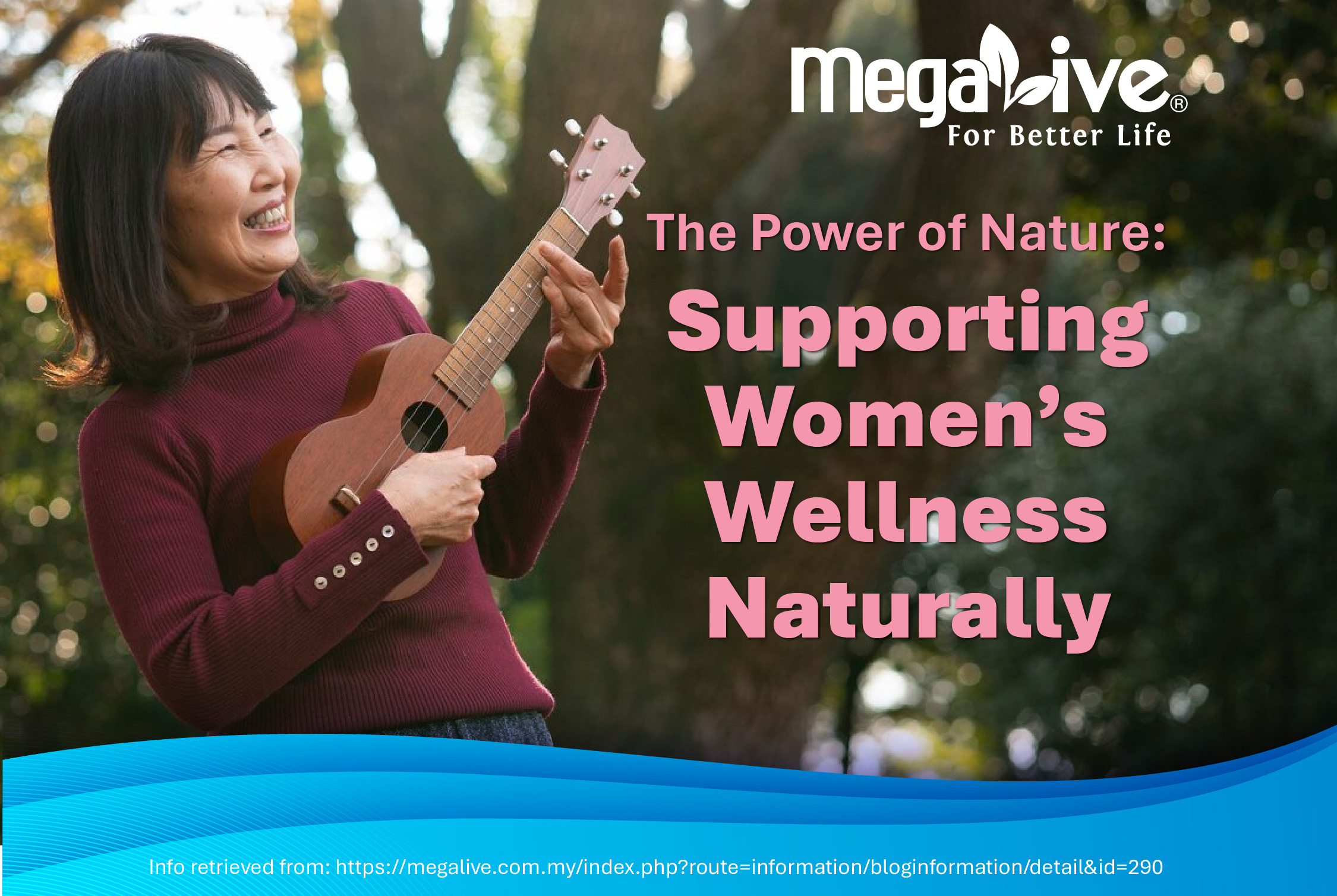
Herbal remedies have long been revered for their ability to promote health and vitality, especially for women. A combination of potent natural extracts like Cynanchum wilfordii, Angelica gigas, Phlomis umbrosa, and Humulus lupulus offers a holistic approach to addressing the unique health challenges women face at various stages of life.
Key Ingredients and Their Benefits
- Cynanchum Wilfordii
Widely used in traditional Asian medicine, Cynanchum wilfordii enhances blood circulation and boosts energy. This herb is beneficial for supporting bone health and alleviating fatigue, making it an ideal choice for women juggling the demands of daily life
- Angelica Gigas
This herb has a rich history in Eastern medicine and is particularly effective in easing menstrual discomfort and hormonal fluctuations. Angelica gigas has calming properties that help reduce stress and promote emotional well-being.
- Phlomis Umbrosa
Phlomis umbrosa, known for its anti-inflammatory and analgesic effects, is used to alleviate joint and muscle pain. Its support for musculoskeletal health is particularly beneficial for women experiencing hormonal transitions.
- Humulus Lupulus (Hops)
Hops extract is a natural source of phytoestrogens, compounds that help balance hormones. This herb is especially helpful in managing menopausal symptoms, such as hot flashes and insomnia, making it a valuable ally during midlife transitions
Holistic Health Benefits: A Natural Solution for Every Stage of Life
The synergy of these herbs provides comprehensive support for women across different stages of life, from hormonal imblances during menstruation to the challenges of menopause. From enhancing energy and managing hormonal changes to supporting bone and joint health, these extracts offer a natural and effective approach to overall well-being. Their use in traditional medicine, combined with modern research, underscores their safety and effectiveness in supporting women’s health.
However, as with any herbal-based supplement, it is important to note that some herbal ingredients may be contraindicated with certain medications, particularly for women in menopause. The older we get, the more health concerns we may encounter, often requiring medication. Therefore, it is always advisable to consult with a healthcare professional before incorporating herbal remedies into your routine, ensuring they are compatible with your current health regimen.
References
- Kim SJ, Jin SW, Lee GH, Kim YA, Jeong HG. Evaluation of Estrogenic Activity of Extract from the Herbal Mixture Cynanchum wilfordii Hemsley, Phlomis umbrosa Turczaninow, and Angelica gigas Nakai. Toxicol Res. 2017 Jan;33(1):71-77. doi: 10.5487/TR.2017.33.1.071. Epub 2017 Jan 15. PMID: 28133516; PMCID: PMC5266372.
- Chun JM, Lee AY, Nam JY, Lee MY, Choe MS, Lim KS, Kim C, Kim JS. Protective effects of Phlomis umbrosa extract on a monosodium iodoacetate-induced osteoarthritis model and prediction of molecular mechanisms using transcriptomics. Phytomedicine. 2021 Jan;81:153429. doi: 10.1016/j.phymed.2020.153429. Epub 2020 Dec 1. PMID: 33310311.
- Herbal Remedies for Women's Health: Benefits and Research. Nutraceutical Business Review.
- Phytochemical Effects of Phlomis Umbrosa and Its Use in Traditional Medicine. Herbal Medicine Journal.
- The Role of Phytoestrogens in Menopausal Symptom Management.EstroG100 Journal.

Growing Screen Time, Growing Vision Concerns: Protecting Children’s Eye Health in a Digital World
With digital devices becoming central to both learning and play, children are spending more time than ever in front of screens. Unfortunately, this rise in screen time has led to an increase in vision issues among children worldwide, including in Malaysia.
Studies show that globally, nearly 30% of school-aged children experience myopia (nearsightedness), a statistic that is climbing each year. In Malaysia, a recent survey revealed that over 20% of children have some form of vision impairment. This rise is linked to prolonged screen time, especially during the COVID-19 pandemic, when virtual learning became essential.
Several factors contribute to this trend. The blue light emitted from screens can cause eye strain and disrupt sleep, while focusing on close-up screens for extended periods may lead to digital eye strain or even contribute to the development of myopia. Limited outdoor time is another factor; natural sunlight is known to support healthy vision development, and children spending more time indoors tend to have higher rates of myopia.

Parents and caregivers can help protect children’s eyes by encouraging regular breaks with the 20-20-20 rule: every 20 minutes, look at something 20 feet away for at least 20 seconds. Prioritizing outdoor play also allows children’s eyes to relax from close-up screen focus. Practicing good screen habits—such as setting appropriate brightness, avoiding screens in dark environments, and keeping devices at a safe distance from the eyes—can also reduce strain.
In addition to these habits, eye health supplements and foods that are rich with nutrients thacan support children’s vision are particularly beneficial, such as lutein and zeaxanthin. Lutein and zeaxanthin act as natural filters against blue light, helping to protect the retina and maintain visual sharpness. Vitamins C and E are also powerful antioxidants that shield eye tissues from oxidative stress, promoting long-term eye health.
As digital devices become essential in daily life, it’s crucial to balance their benefits with proactive eye care. By practicing good screen habits and considering dietary support, we can help children maintain bright, clear eyesight in our fast-changing, screen-centric world.
References
-
World Health Organization (WHO): World report on vision. Geneva: WHO, 2019. This report discusses global vision health trends and the impact of screen time on vision issues, including myopia in children.
-
American Optometric Association: Digital Eye Strain and Myopia Management in Children. This provides information on digital eye strain, myopia, and best practices to mitigate eye strain for children.
-
Ministry of Health Malaysia: National Eye Survey (NES) Malaysia. This survey provides statistics on visual impairment in Malaysia, including data on children’s eye health.
-
American Academy of Ophthalmology: Recommendations on children’s screen time and its potential impact on eye health.
-
Research on Eye Supplements: Various studies on lutein, zeaxanthin, and other antioxidants for eye health, such as "Lutein and Zeaxanthin Isomers in Eye Health and Disease" (Nutrients, 2020), which details their benefits for retinal protection against blue light.

